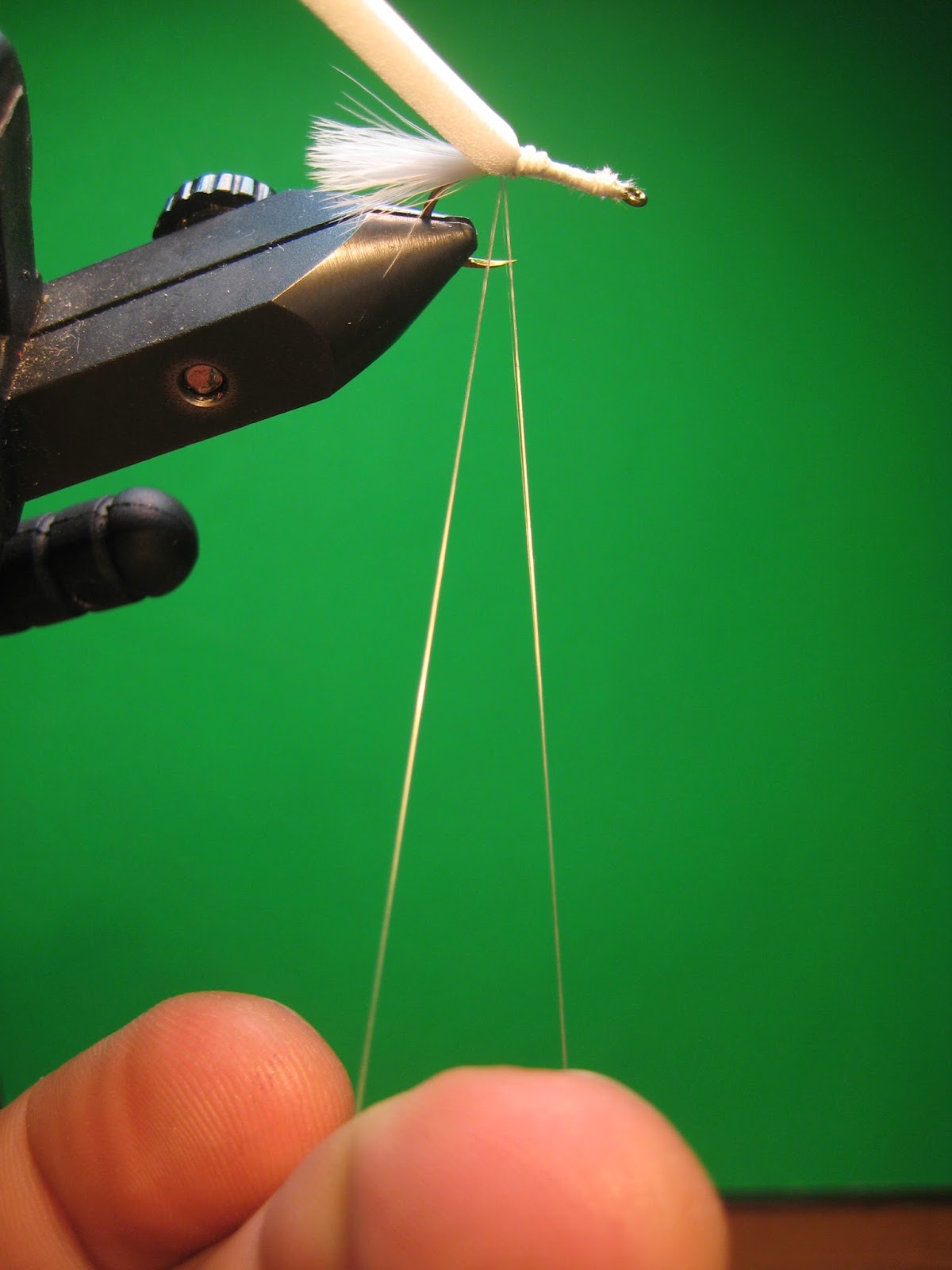Materials needed:
Hook: 2x long nymph hook, size #12-18. I'm using a size #16 TMC 3761.
Thread: Black UNI-Thread 8/0
Bead: Copper or gold sized to match your hook.
Tail: 2 brown goose biots.
Body: Purple UV Ice Dub.
Rib: Copper wire. I'm using Amber colored wire.
Wing bud: Z-lon or Antron yarn
Legs: 2 white goose biots.
Head: Black UV Ice Dub.
Put your bead on your hook, and secure your hook in the vise.
You can optionally add 8 or so wraps of lead wire.
Start your thread just behind the lead wire.
Wrap your thread back to the tie in point for your tail. Wrap 3-4 wraps of thread right here on top of each other to build up a little bump.
Building up a little bump helps to keep the goose biots seperated.
Select 2 brown goose biots, and place them back to back.
You want the length of your tail to be a little shorter than the length of the hook shank.
Measure your tail, and then pinch the 2 goose biots together with the hook shank in-between them.
Tie the biots down just in front of the thread bump with 3-4 tight wraps.
Continue wrapping your thread forward to the lead wraps, securing the goose biot butt ends to the hook shank as you go.
Trim the biot butts just bihind the lead wraps.
Wrap your thread across the lead wire wraps to lock them in place.
Tie in your wire rib and wrap your thread back to the base of the tail.
Twist a small amount of dubbing onto your thread, and wrap forward keeping the back small, and building a slight taper as you move forward.
Keep adding dubbing and wrapping forward until you have a nice tapered body that ends about a beads length from the bead.
Wrap your rib forward with open spirals and tie it off behind the bead.
Break or trim the butt end of wire off.
Put two white goose biots back to back and tie them in behind the bead. The length should be just short of the hook shank.
Trim the butt ends of the goose biots.
Tie in some z-lon, the length of the hook shank.
Twist a small amount of Black Ice Dub onto your thread.
Wrap your dubbed thread forward building a tiny head just behind the bead.
Whip finish, and apply head cement.































































